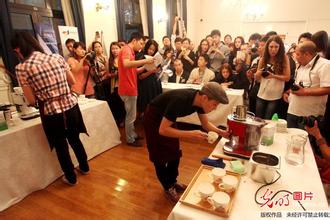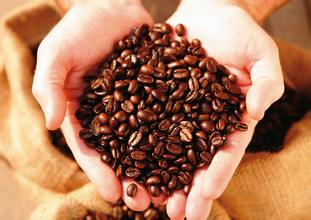The method of extraction and tasting for the quality of espresso
The method of extraction and tasting for the quality of espresso
By observing the extraction rate, you can clearly know when this espresso is the worst. Double espresso usually has 30 to 45 grams, and it takes 25 to 35 seconds to get a full picture, depending on the characteristics of the coffee itself. In the case of lightly roasted Kenyan coffee (I mean general coffee beans), in order to suppress its acidity, a low flow rate and a long extraction process (at least 30 seconds) is necessary; if it is a deeply roasted Brazilian coffee, in order to control its bitterness, it may be more suitable for violent brewing.
As a rule of thumb, acids are first extracted, so espresso that is underextracted (flows too fast) tastes sour. Then there is sweetness, but the actual sugar content of roasted coffee is so low that it is difficult to set a standard. Sweetness is also a physiological feeling, but it is related to aroma components and strong texture, so it also symbolizes excellent mellow thickness. Bitterness is usually extracted in the final stage, and these slowly dissolved compounds balance the finished product in the cup from a global point of view; but if extracted too much, bitterness can easily drive away other flavors.
What about the aroma? The aroma quality of espresso is the most different from each other, so it is almost impossible to make coffee according to a particular aroma curve. The aroma of the coffee in the cup is determined by the grower and the roaster, which does not reflect the skill of the barista, but the latter can change the way we perceive the aroma by adjusting the taste curve. Baristas can adjust the acidity of the coffee, such as highlighting the sour taste of oranges or the aroma of grapefruit. The same coffee, if pulled more tightly, tastes more bitter and sweet, with a taste of orange chocolate or grapefruit jam. Excellent extraction is the only way to brew coffee, and espresso is no exception. It doesn't sound difficult, but the intensity of the espresso brewing process is the problem we have to face. Extracting the best part of the coffee in a very short interval is no less difficult than rinsing yourself with a fire hose in 30 seconds. In the case of espresso, good extraction refers to a balance between a large number of aromatic compounds and taste compounds. In other words, the bitterness should be structural, the acidity should be fresh, and the sweetness should be long-lasting-of course, no matter which method of cooking, these are the goals we pursue. All coffee is flawed in one way or another, and you can't improve the quality by tasting it and know when it's best to drink it, but according to the absolute minimum

Important Notice :
前街咖啡 FrontStreet Coffee has moved to new addredd:
FrontStreet Coffee Address: 315,Donghua East Road,GuangZhou
Tel:020 38364473
- Prev

Description and treatment of taste and flavor of Italian espresso introduction to grinding scale of variety producing area
Description method of taste and flavor of Italian espresso introduction of grinding scale in producing area 1. It is impossible to make a good Espresso without a good coffee mix. Coffee must be matched with the sweetness, aroma and lubrication required by Espresso. Coffee beans must be fresh. We recommend using coffee beans within 4 days after baking. two。 Deeply baked beans will taste bitter and scorched. An experienced baker
- Next

Description of the characteristics and flavor of cappuccino coffee introduction to the taste of grinding scale variety treatment
Cappuccino Coffee characteristic Flavor description Grinding scale Variety treatment Taste introduction on the basis of Italian espresso, add a thick layer of foaming milk to become cappuccino. The quality of espresso can be seen in milk and foam, but it is still an important factor in determining the taste of cappuccino. Pour partially skimmed milk into a pot, then use
Related
- Beginners will see the "Coffee pull flower" guide!
- What is the difference between ice blog purified milk and ordinary milk coffee?
- Why is the Philippines the largest producer of crops in Liberia?
- For coffee extraction, should the fine powder be retained?
- How does extracted espresso fill pressed powder? How much strength does it take to press the powder?
- How to make jasmine cold extract coffee? Is the jasmine + latte good?
- Will this little toy really make the coffee taste better? How does Lily Drip affect coffee extraction?
- Will the action of slapping the filter cup also affect coffee extraction?
- What's the difference between powder-to-water ratio and powder-to-liquid ratio?
- What is the Ethiopian local species? What does it have to do with Heirloom native species?

